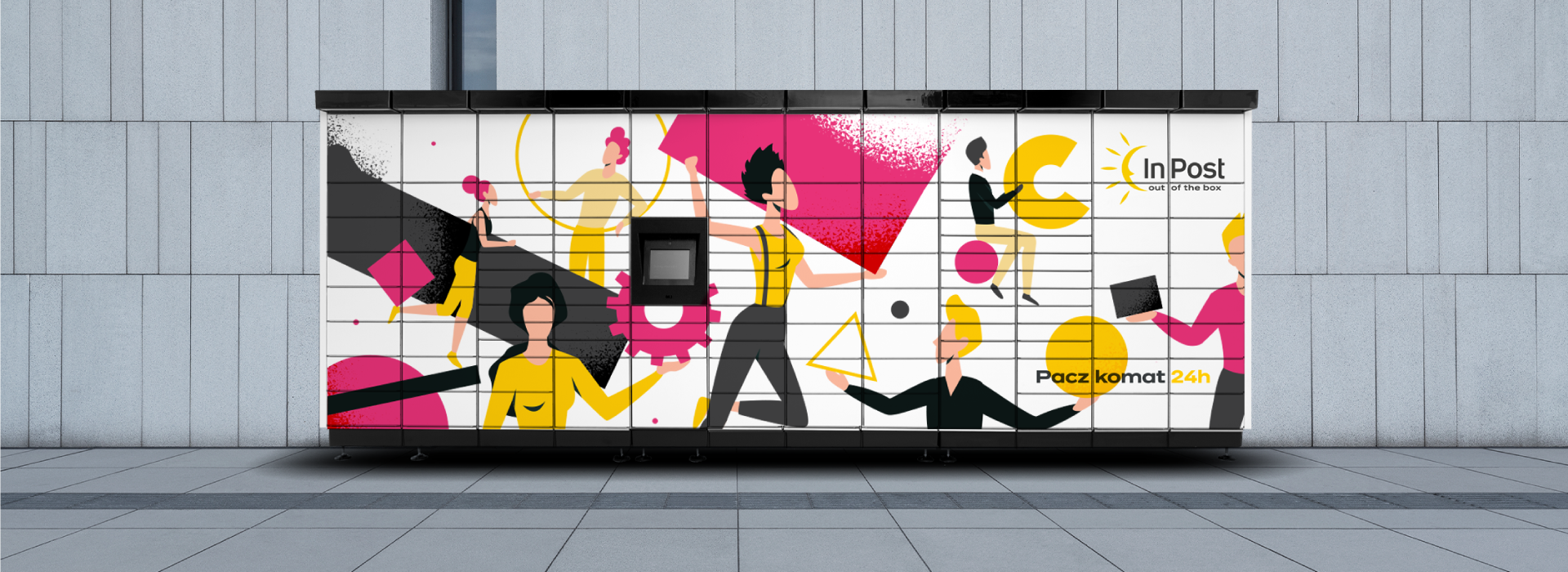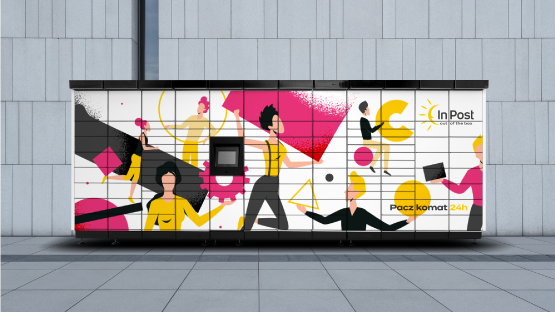Commercial advertising - what does it consist of? Characteristics and examples
Reklama

28 August 2025
Commercial advertising is a key element of the marketing strategy of many businesses. Its efficient use requires the use of persuasion, and it serves to build the brand and shape consumers' perceptions of products or services. What else is worth learning about it?
What is commercial advertising?
Advertising Commercial is a form of promotion (i.e. marketing). It is used to communicate messages about products, services or brands by a particular company in order to increase their sales. It is designed to persuade potential customers to buy and is a commonly used tool in both traditional media and digital environments.
The message is designed to capture the attention of the audience, so it is carefully designed and features a high degree of creativity. All of its visual and audio elements are created with the aim of providing a positive brand image; this serves to convince consumers of the value of the product and to communicate the unique features and benefits it provides.
All of the sample commercial advertisements contain elements to identify the brand, namely:
- then;
- slogan;
- distinctive colours or sounds (fixed audiovisual element).
It is worth noting that these are aimed at specific target groups - companies closely tailor the message to the needs and expectations of specific market segments. This action increases the effectiveness of marketing campaigns.
What else is worth finding out? They can be distributed in a variety of media:
- TV;
- radio;
- press (primarily local newspapers);
- internecie;
- social media (e.g. Facebook, Instagram and LinkedIn);
- outdoor advertising (including billboards).
Many advertisers include so-called CTAs, or calls to action, encouraging consumers to take a specific action (e.g. purchase, register, visit a website or even try out a product). This is a good and practical way to make sure that recipients understand the message being sent correctly.
Social versus commercial advertising - the differences
Not all advertisements are necessarily designed to promote products or services. Some are created to raise public awareness of selected topics - for example, to draw attention to the growing problem of alcoholism or to ignore family violence; these are called social advertisements.
They are distinguished by the fact that they affect consumers in an entirely different way: they arouse emotions that are undesirable in everyday life and force them to think deeply. One example is the famous "10 less saves lives. Slow down!", which encouraged the public to drive at lower speeds.
How much does it cost to advertise on the internet?
The price of online advertising varies depending on a number of factors:
- kind;
- the chosen platform;
- the presence of competition;
- company size;
- expected results;
- quality of content.
This usually costs between a few hundred and a few thousand zloty per month.
Functions of commercial advertising
The key functions are informational and persuasive. Commercial advertising campaigns notify consumers of the existence of a product or service and then try to encourage them to buy. But of course, it does not stop there, as the content prepared by the company aims at much more! Namely:
- create awareness among the public;
- create a positive image;
- stimulate customers to take a specific action (CTA);
- increase the displays on a running website;
Potential buyers, having seen the ad, should know perfectly well:
- what the product is used for;
- how it can be used;
- how the product will change their daily lives.
In other words, it all coincides with the AIDA (Attention, Interest, Desire, Action) model.
Types of commercial advertising
Commercial advertising takes three different forms: audio, visual and audiovisual.
Audio advertising
A type focused on audio transmission. It is used in radio, podcasts and on music platforms. It is characterised by the creative use of music and dialogue.
Visual advertising
It focuses on the visual and graphic aspect. It is most often encountered on posters, billboards, websites and in brochures and other print media. It includes images, graphics, colour and text.
Audiovisual advertising
It combines audio and visual elements to create a complex message. It is used primarily in television (e.g. product placement) and online content. They are dynamic sequences that are complex messages.
All of these forms have their own advantages and disadvantages and opportunities. Their choice should depend on the advertiser's objectives, the characteristics of the product and, above all, the preferences of the target group.
What distinguishes commercial advertising from others?
Other forms of marketing communication (e.g. PR or social advertising) may have a more general objective of image building or creating awareness of difficult issues. In addition, they focus primarily on obtaining a return on investment (not always in the form of cash) rather than generating additional income.
Commercial advertising operates in a competitive environment where different companies compete for the attention and favour of customers. This means standing out and creating unique messages and offers. Alongside this, it often uses psychological persuasion strategies, tapping into emotions, aspirations and social acceptance to influence consumers' purchasing decisions.
The effectiveness of commercial advertising is measured in financial results - increased sales, profits or market share. Other forms of communication focus primarily on benefits in the form of spreading the ideas promoted or achieving specific social goals (e.g. trying a safer tobacco substitute), or even gaining a certain number of impressions.
While these differences are usually clear, it is worth noting that in practice the the lines between the various forms are blurring. Professionals know how to advertise a business and are keen to use hybrid strategies, combining different elements to increase the chances of delivering a message to a wide audience.
Example of commercial advertising
The presence of billboards promoting InPost in Poland can serve as an example of commercial advertising. The screens of the Paczkomat® machines display marketing content from other companies - consumers become familiar with this content when collecting or sending their parcels.
InPost advertising - commercial and otherwise. Discover our solutions!
Entrepreneurs have a variety of advertising options through the InPost platform. They can:
- to label the Parcel Machine - is a space for posting creative graphics, product information or promotional hashtags;
- display advertisements on parcel machines - This allows customers to be reached through visual messages;
- sample products - This involves providing customers with a sample of the goods sold;
- opt for online advertising banners - a simple way to reach a wide audience;
- use PUSH notifications in the InPost Mobile application - will provide information on promotions, news and important updates;
- use newsletter - It will use the customer base available on InPost Mobile.
This allows companies to build brand awareness, attract new consumers and maintain an ongoing relationship with existing customers.
Reklama Twojej firmy z InPost? To zawsze dobry pomysł!
Poświęć 1 minutę i zostaw nam swój kontakt, a przedstawimy Ci ofertę skrojoną na miarę.
Możliwości jest naprawdę sporo:
- oklejanie urządzeń Paczkomat
- reklama na ekranach urządzeń Paczkomat
- sampling produktów reklamowych
- banery reklamowe na stronie InPost
- reklama w newsletterze InPost
- powiadomienia push w aplikacji InPost Mobile
Czytaj również

Where to get ideas for marketing campaigns? Get inspired by successful campaigns
No one needs to be convinced that marketing is one of the key tools for success. The trick, however, is the effective implementation of ...

Types of advertising - what types do we distinguish?
By definition, advertising is any message that seeks to promote a product and increase its sales. It combines information and a persuasive...

Advertising with InPost - a fresh approach to custom campaigns!
In the very centre of Warsaw you can watch our latest marketing realisation for the Coca-Cola brand in cooperation with the !eatme adverti...



